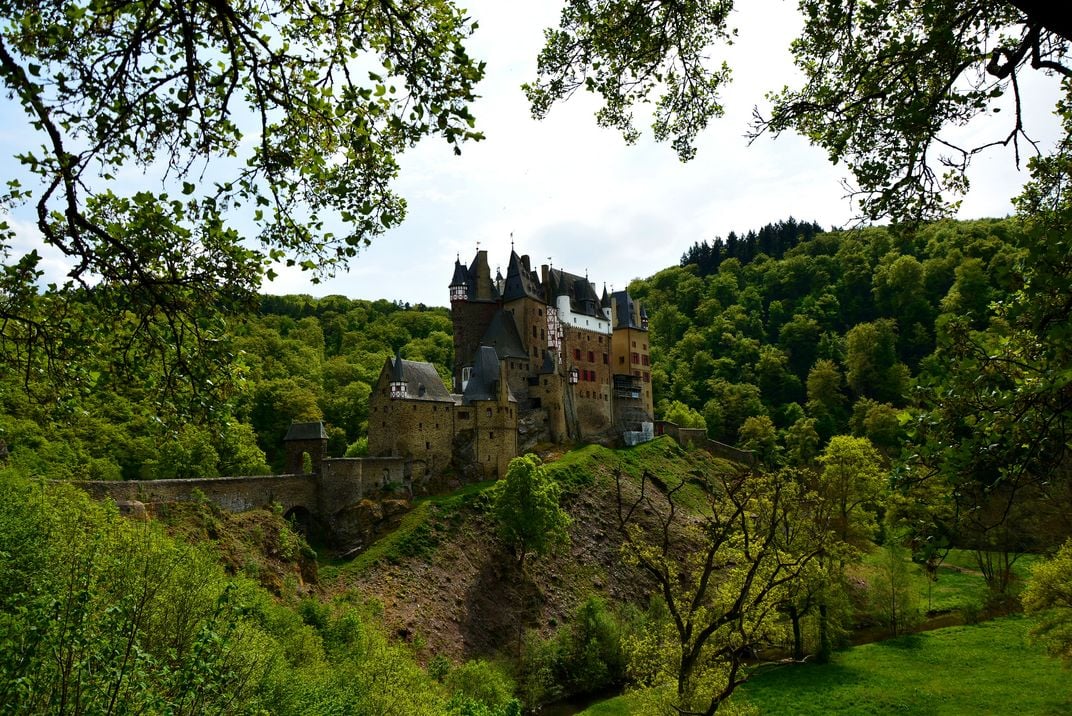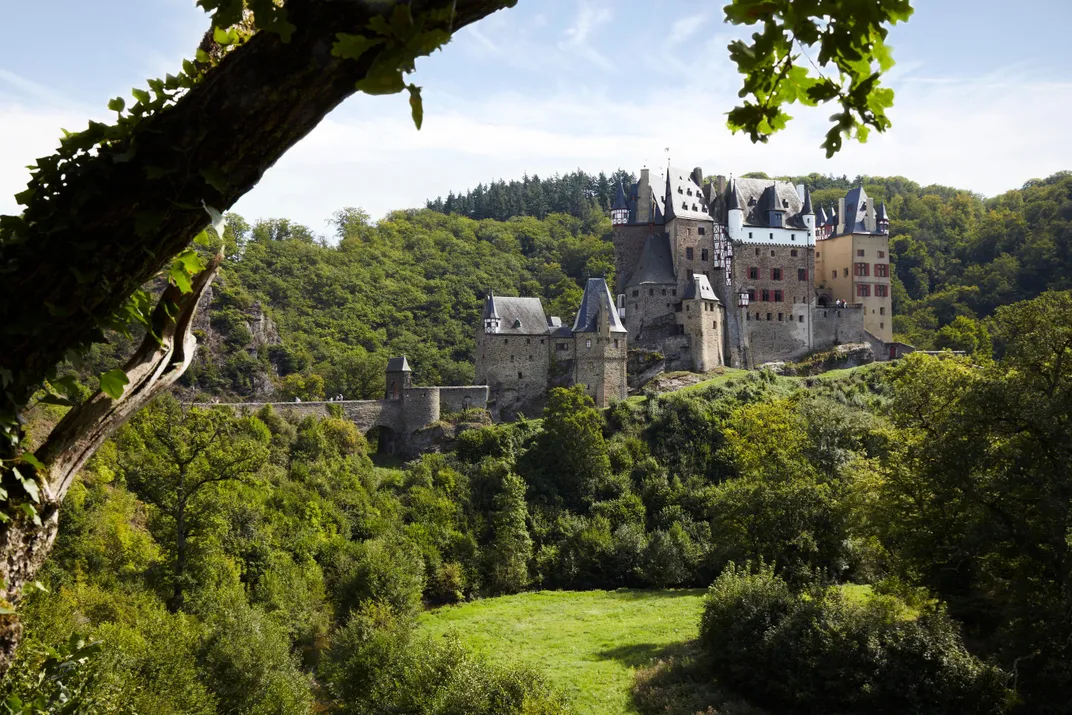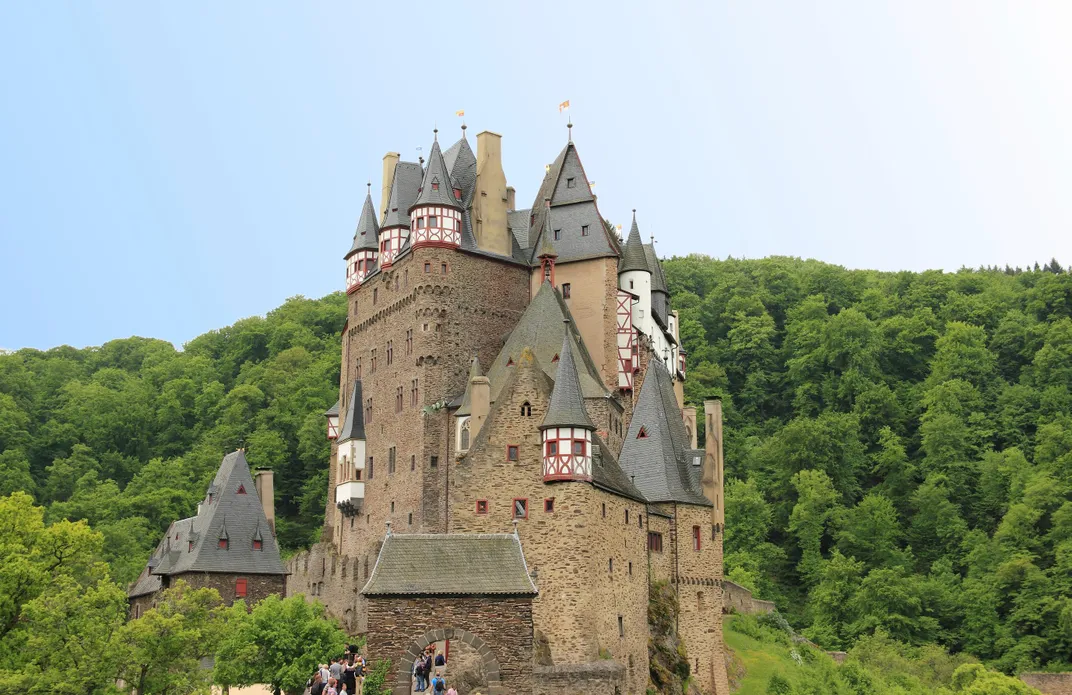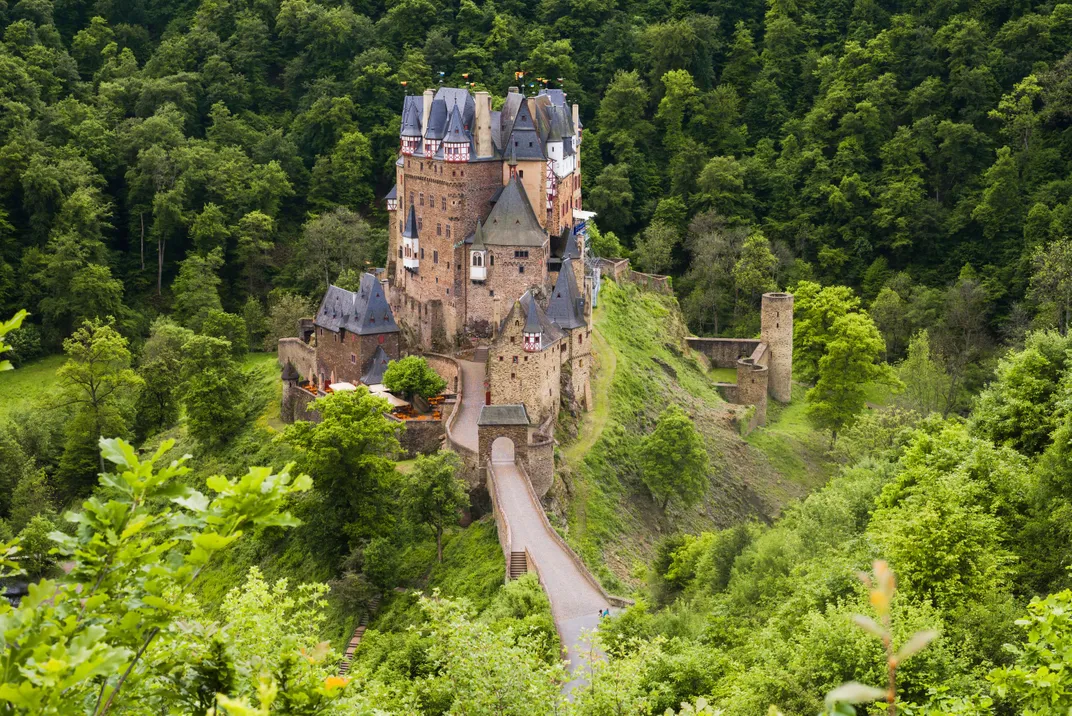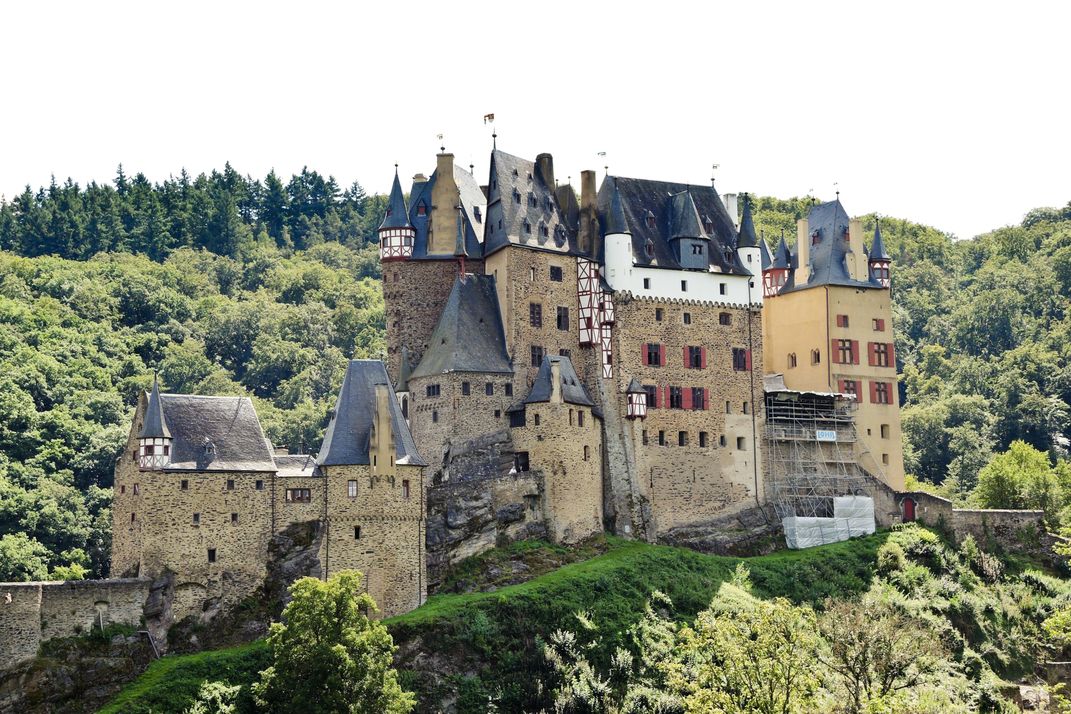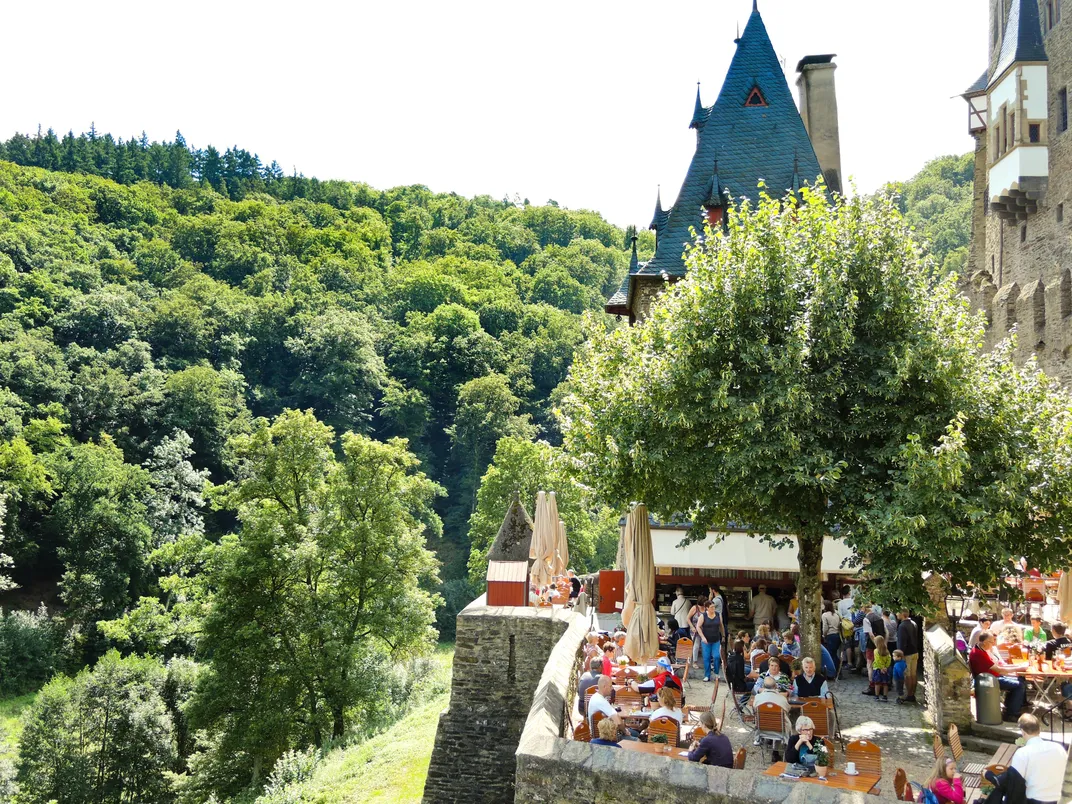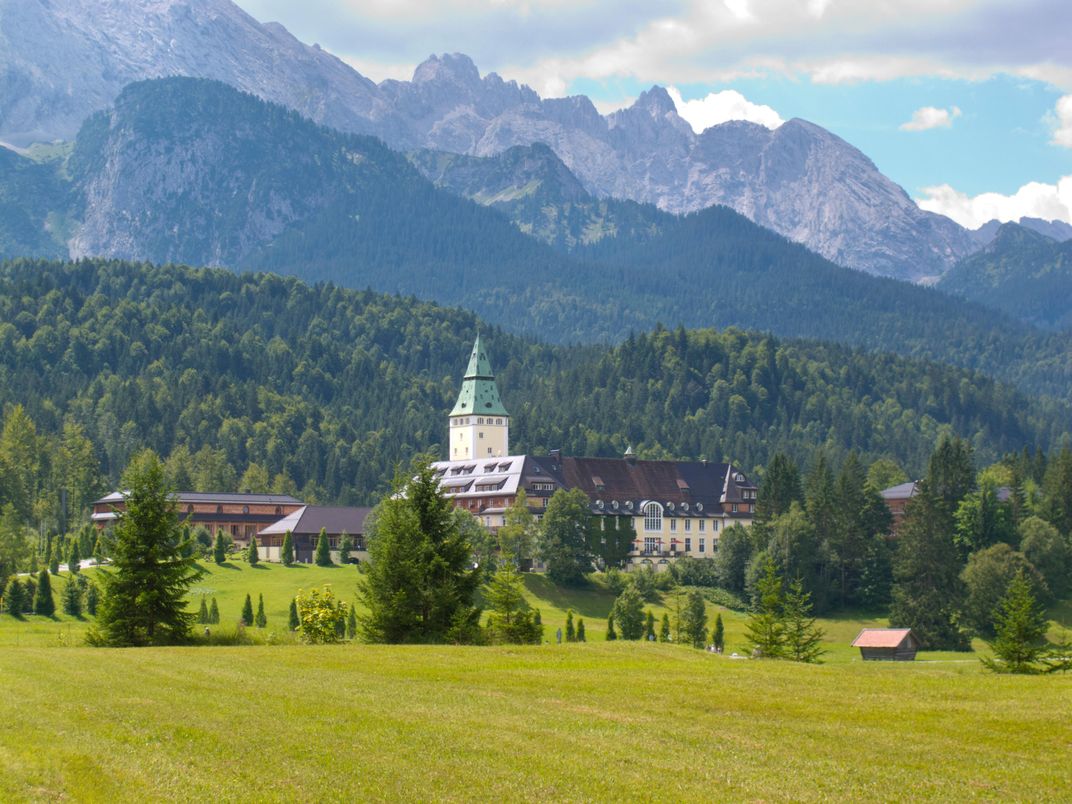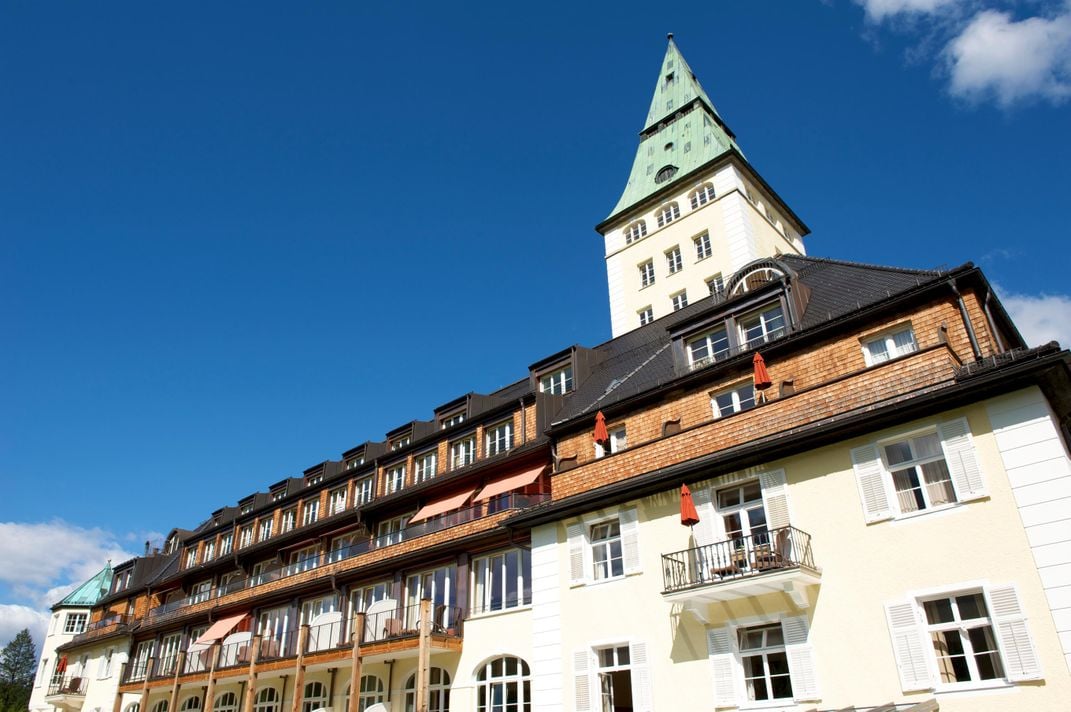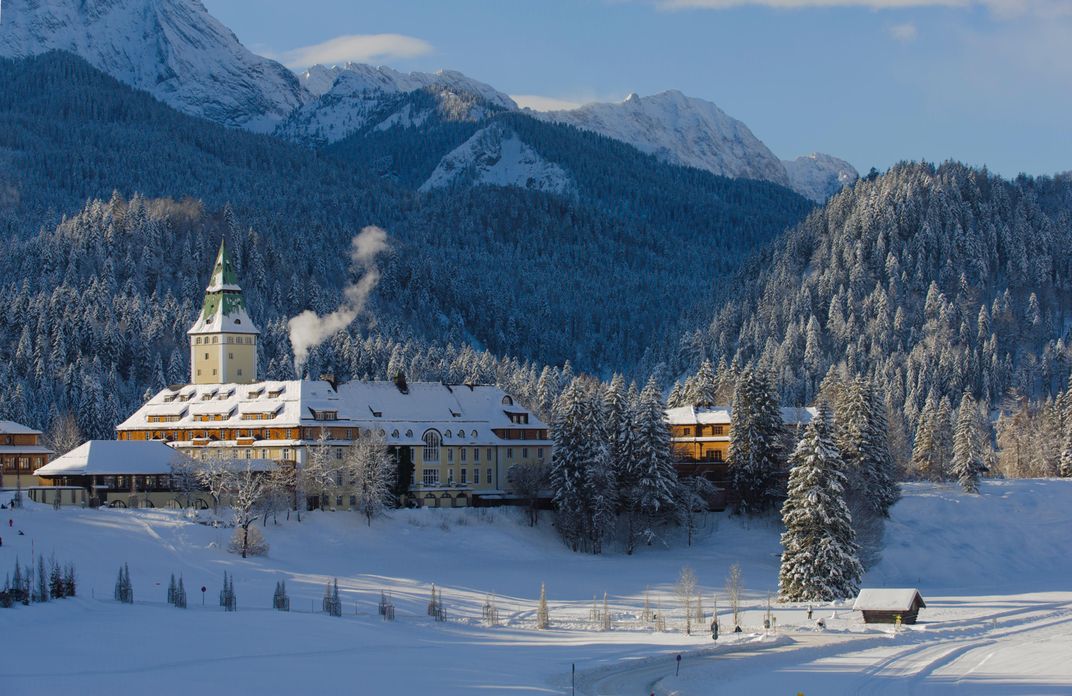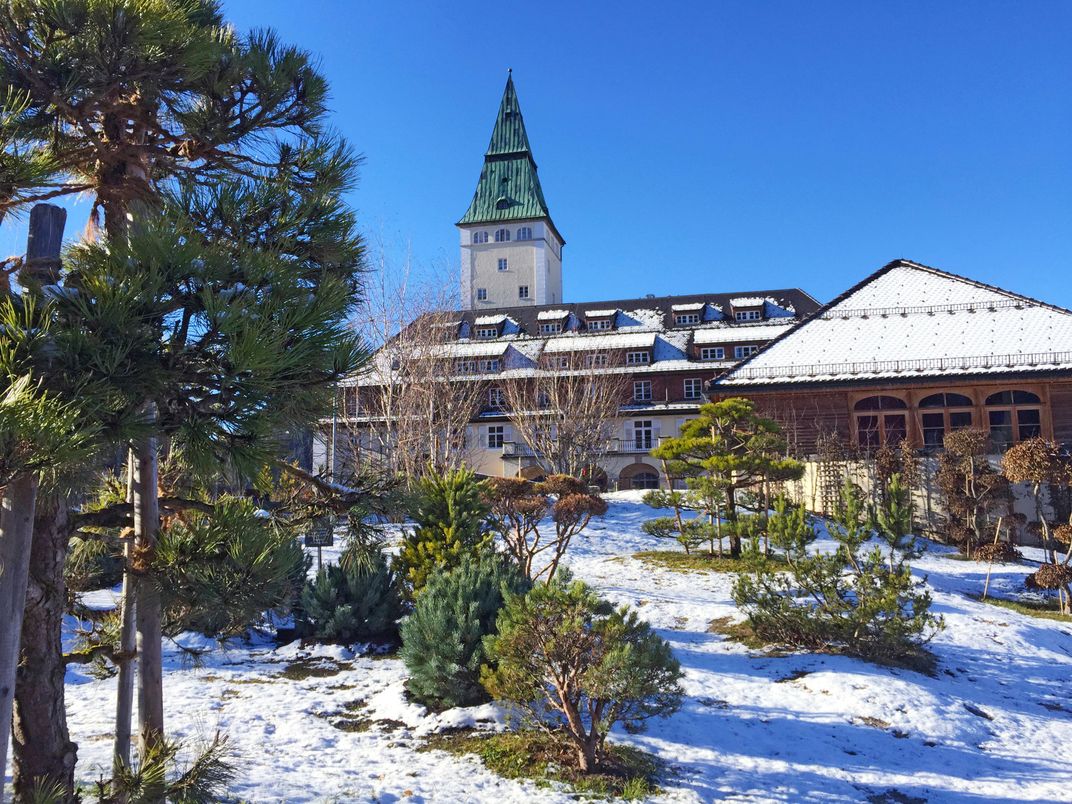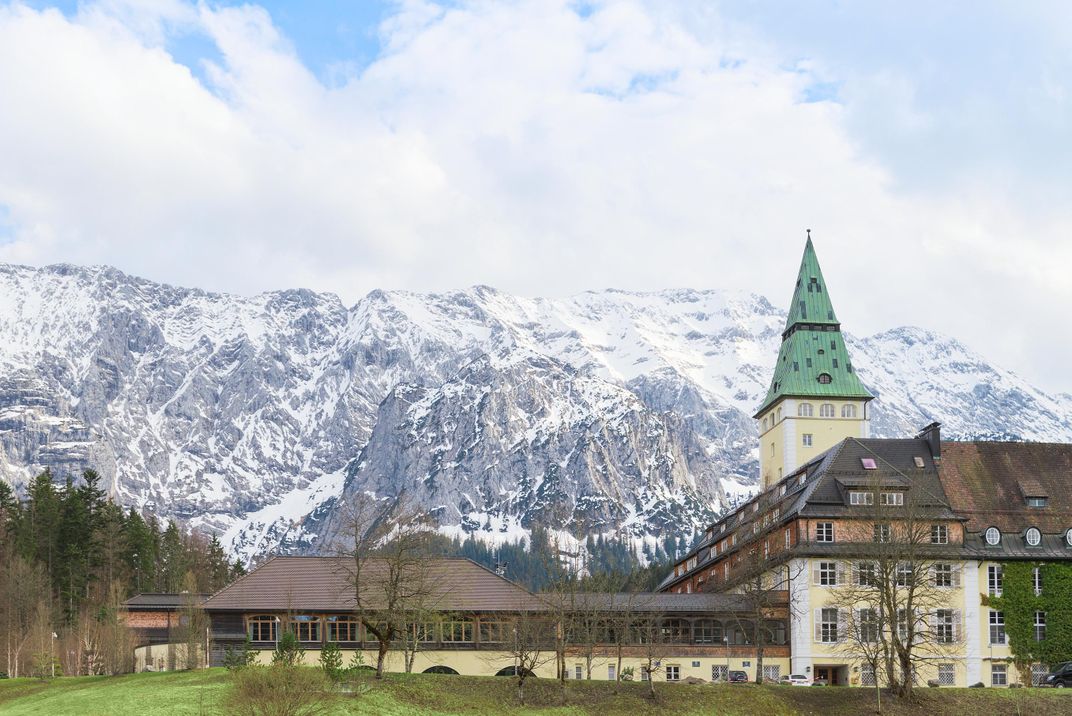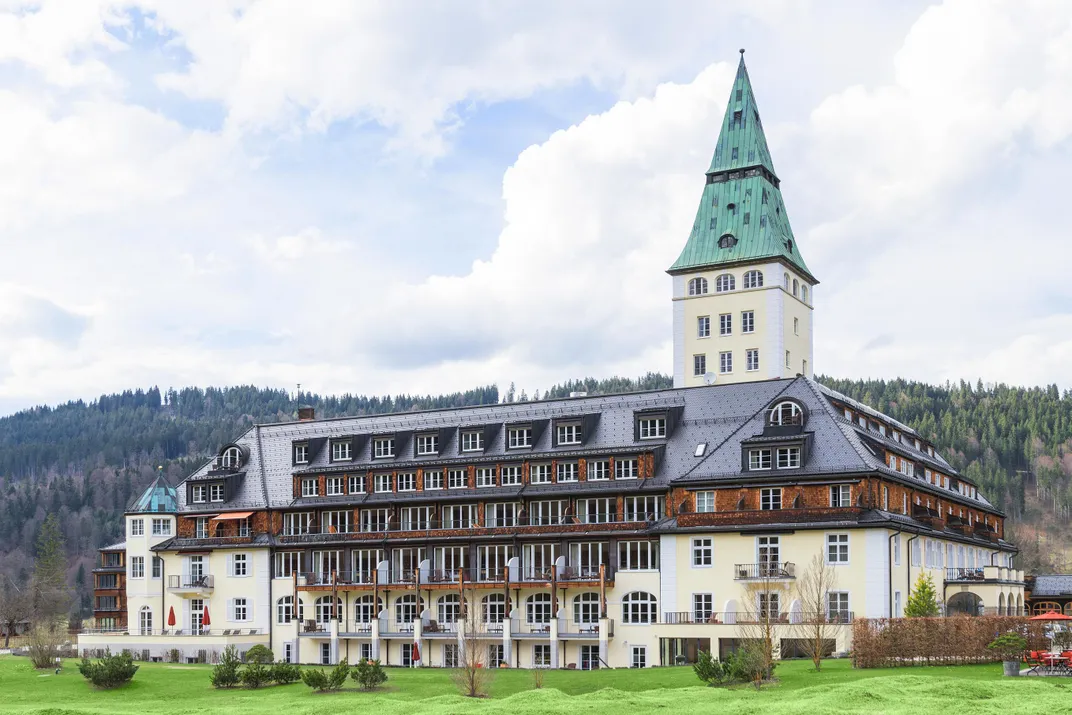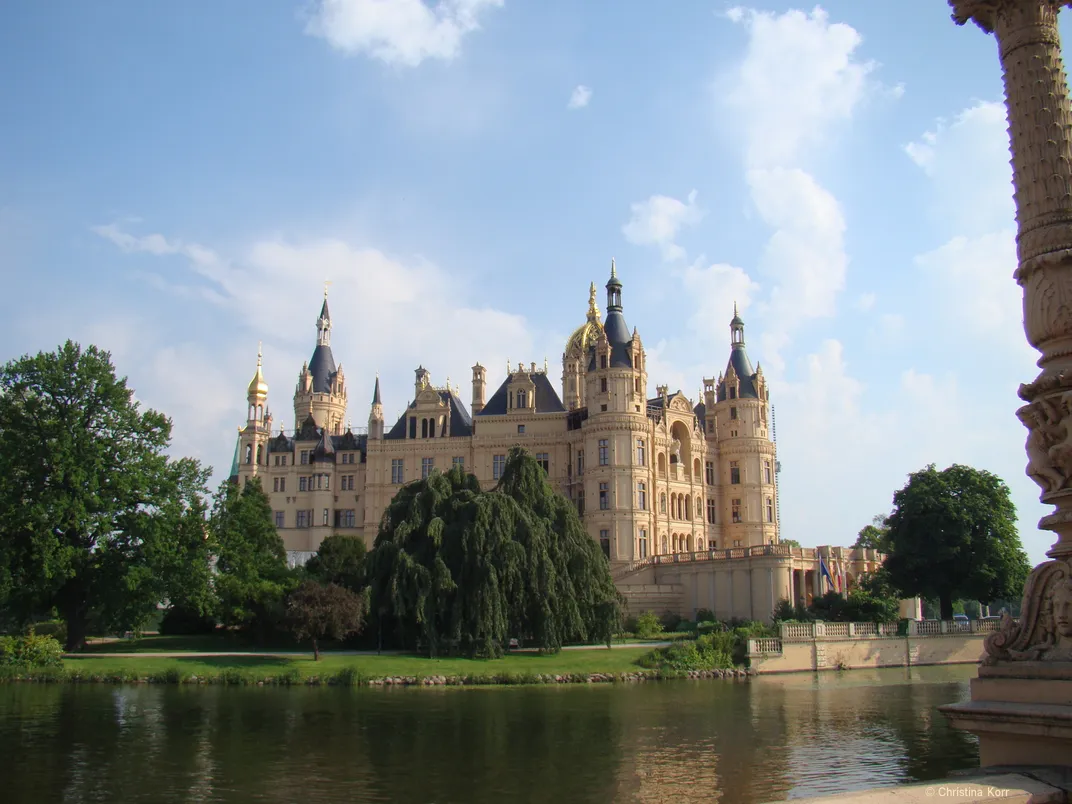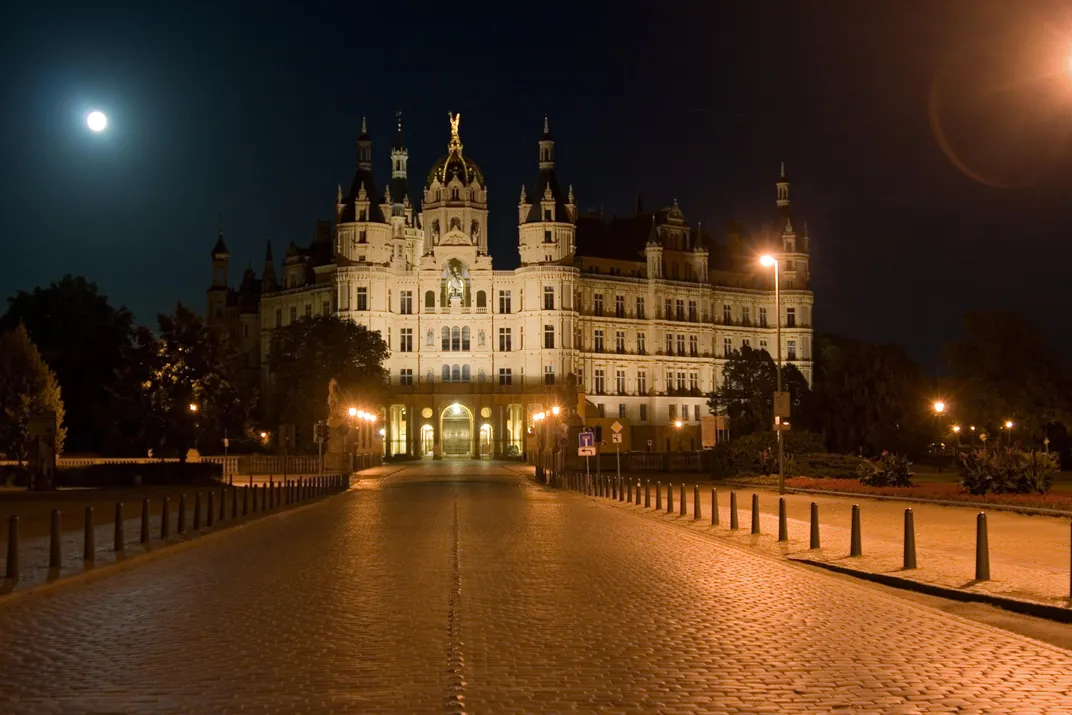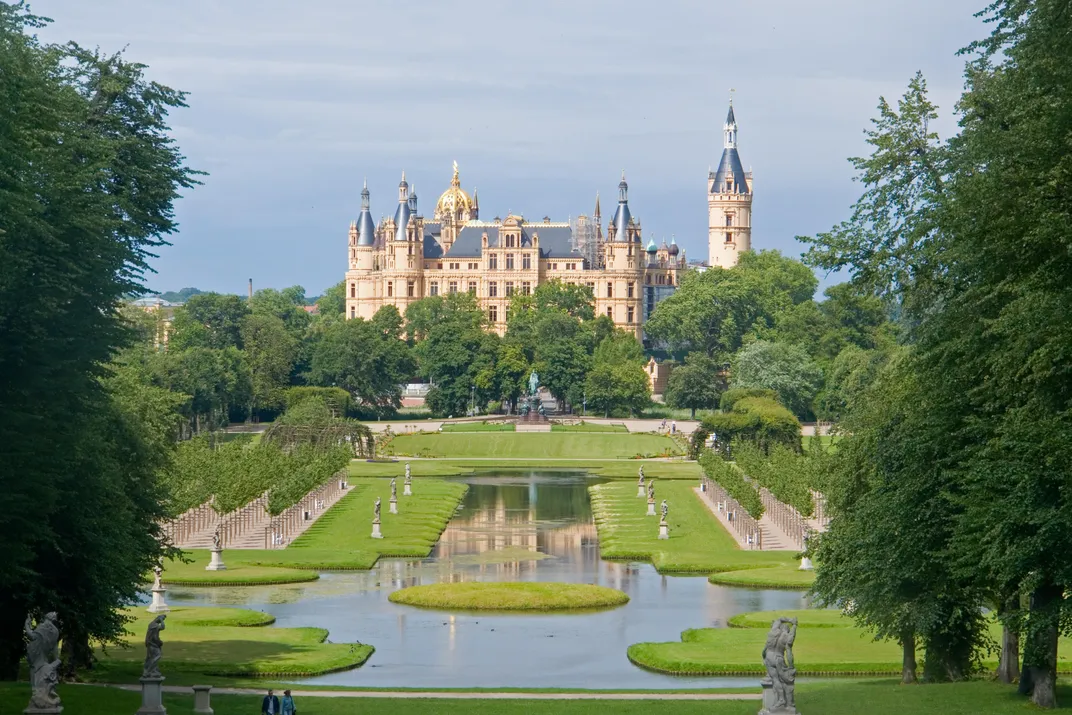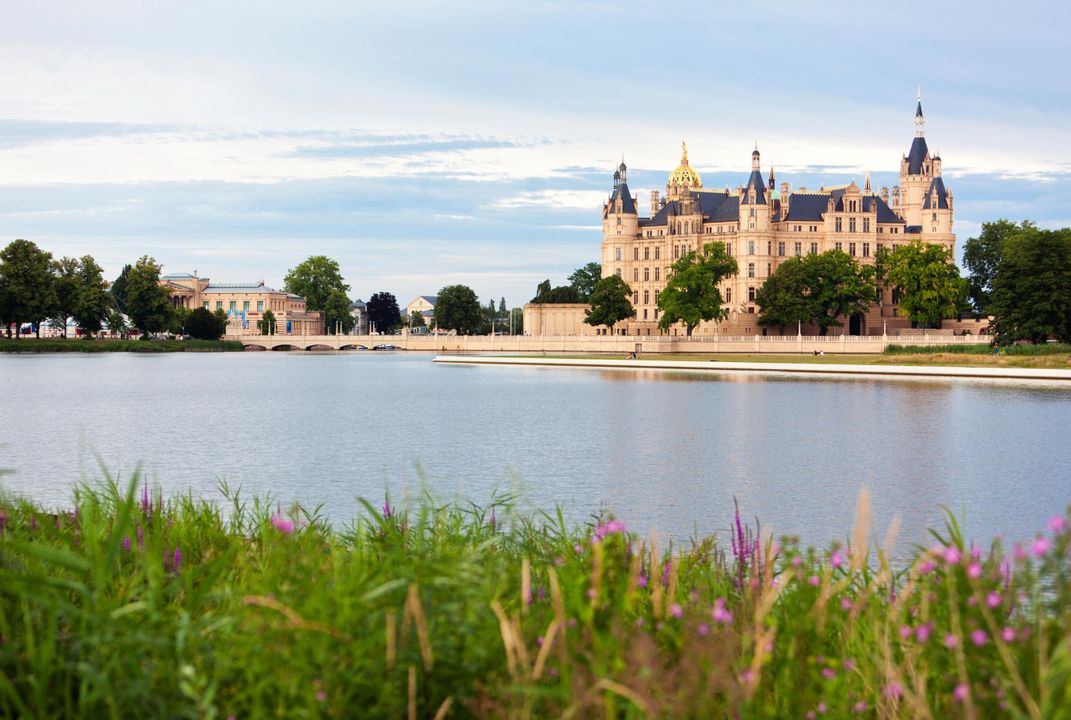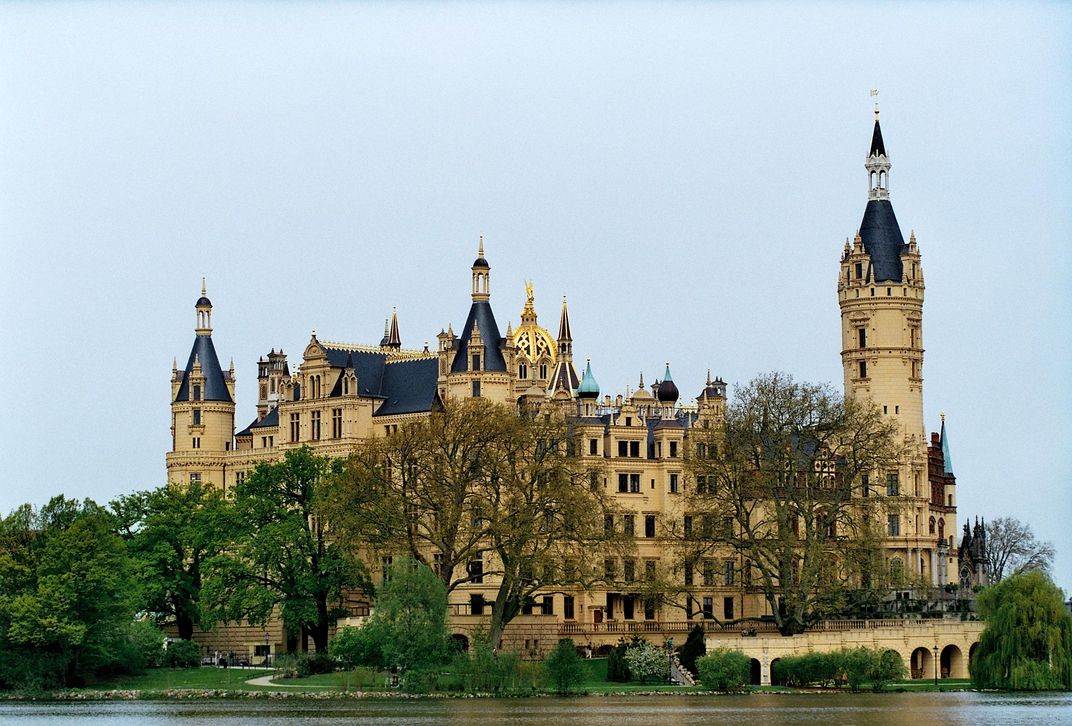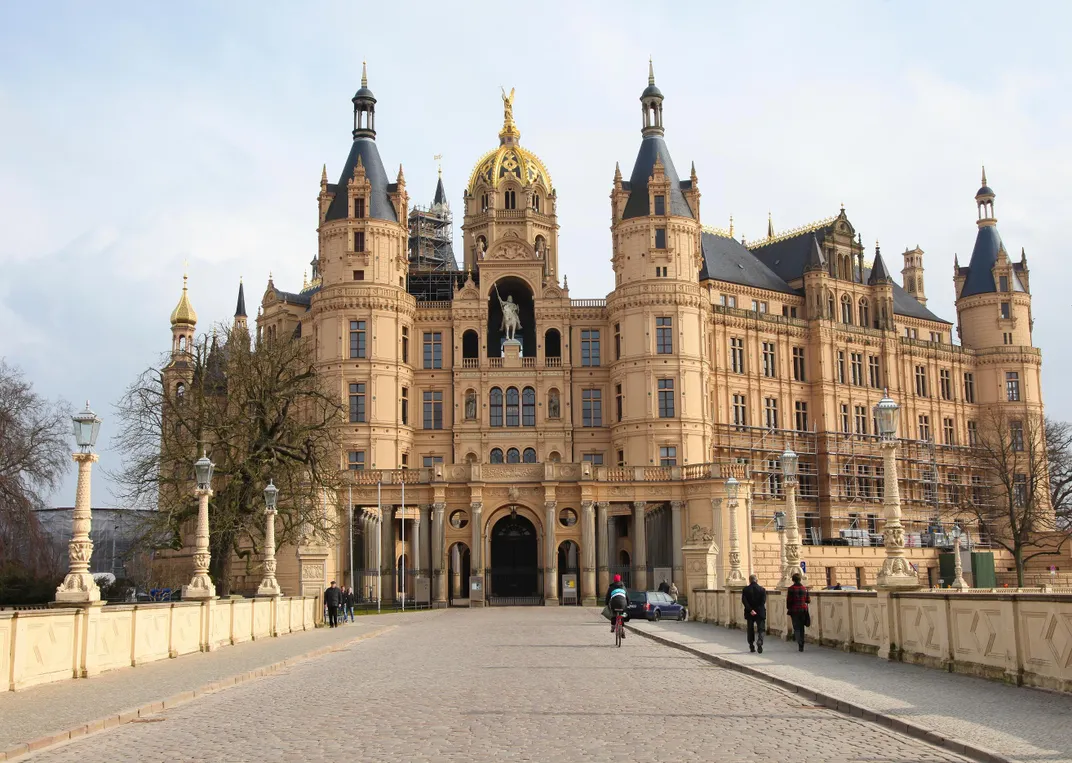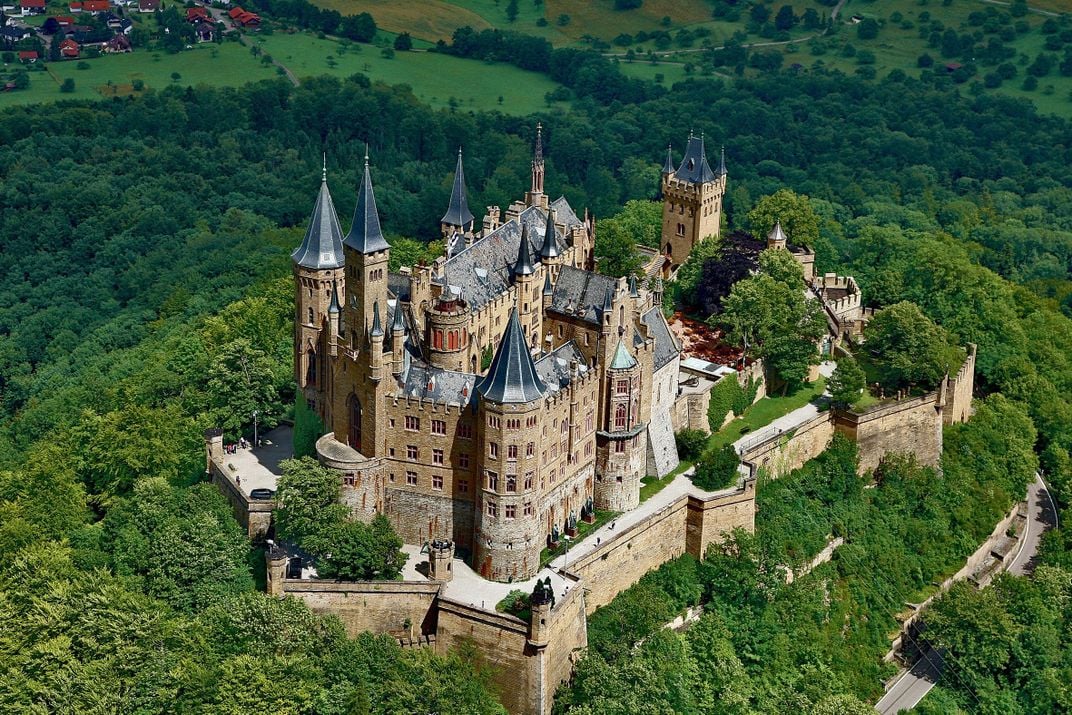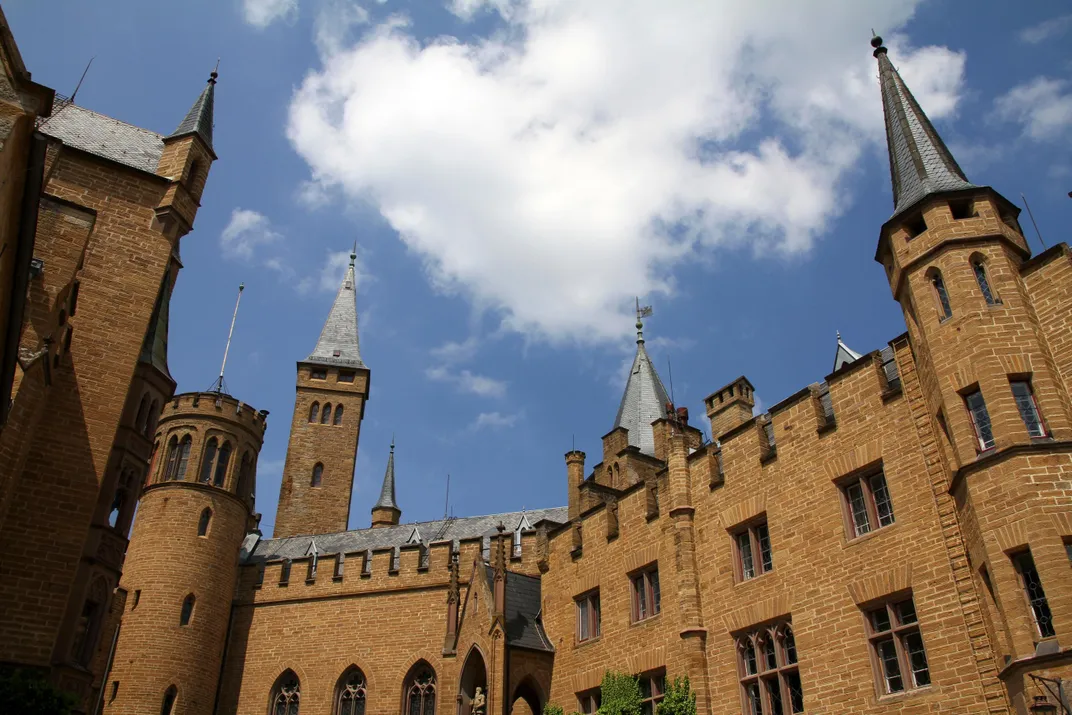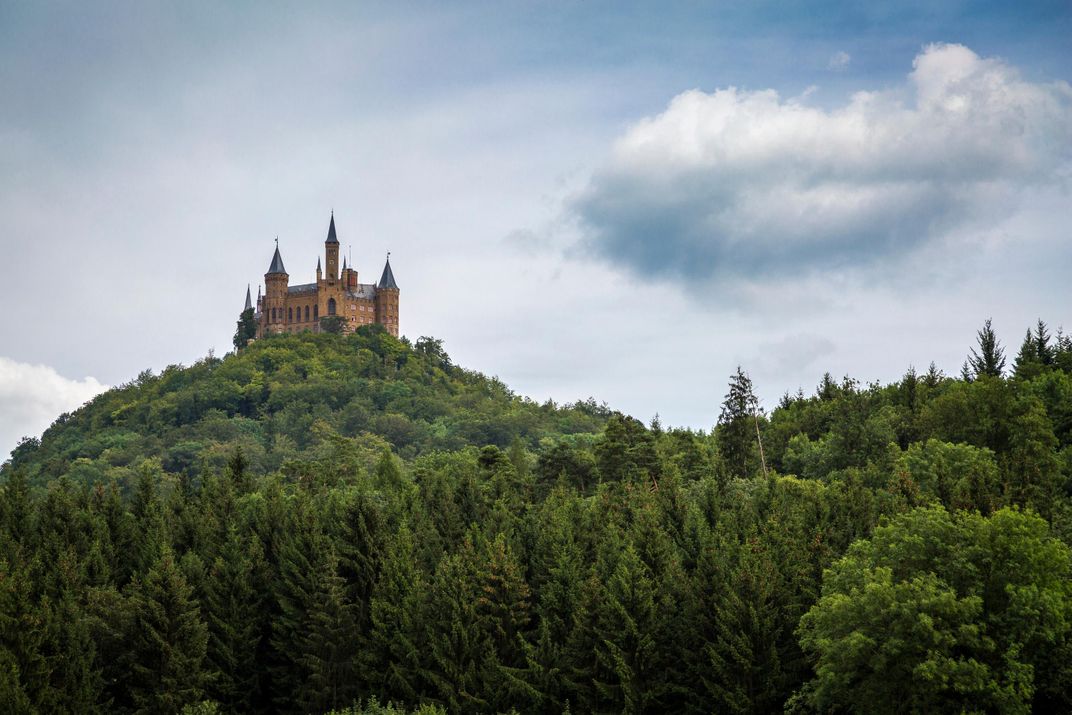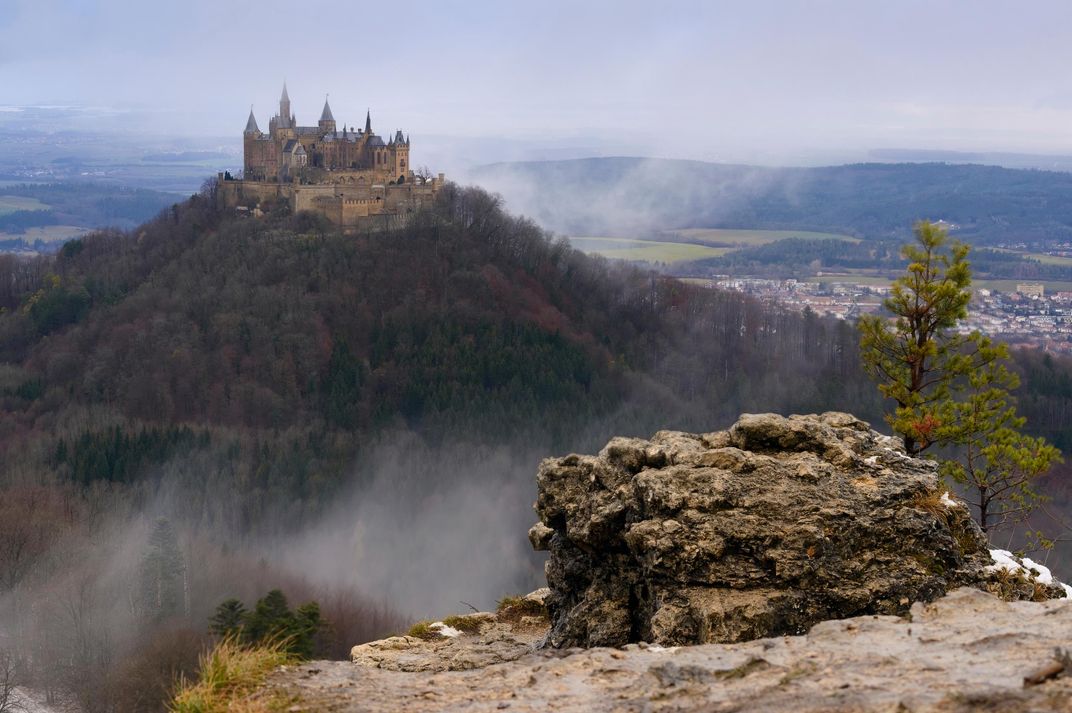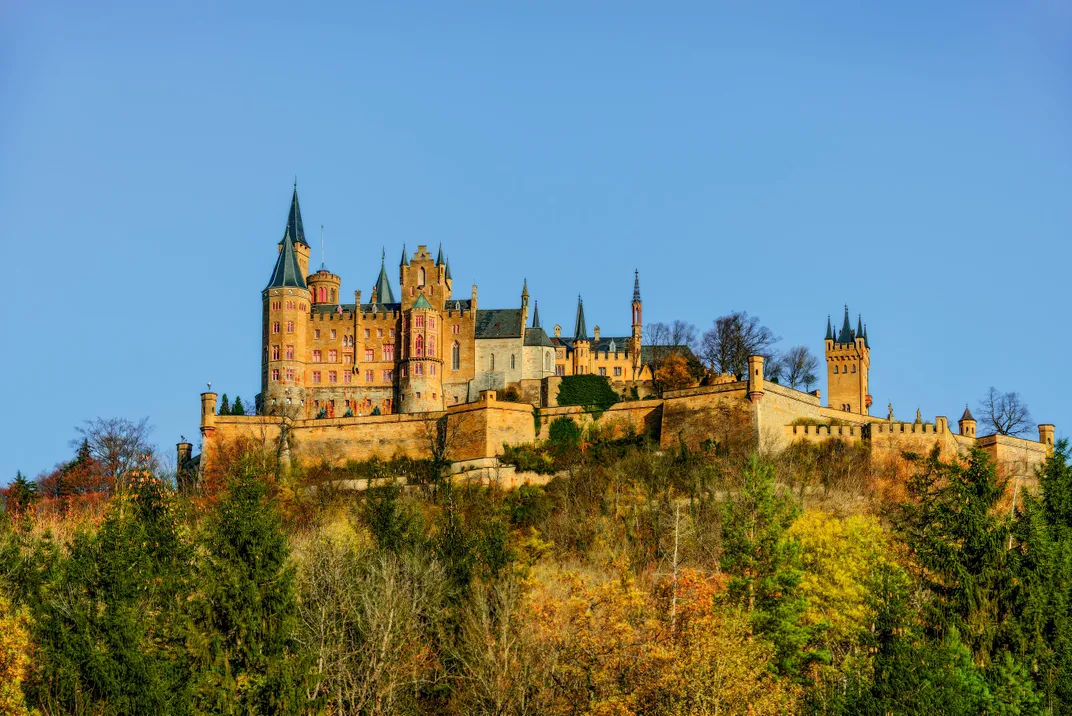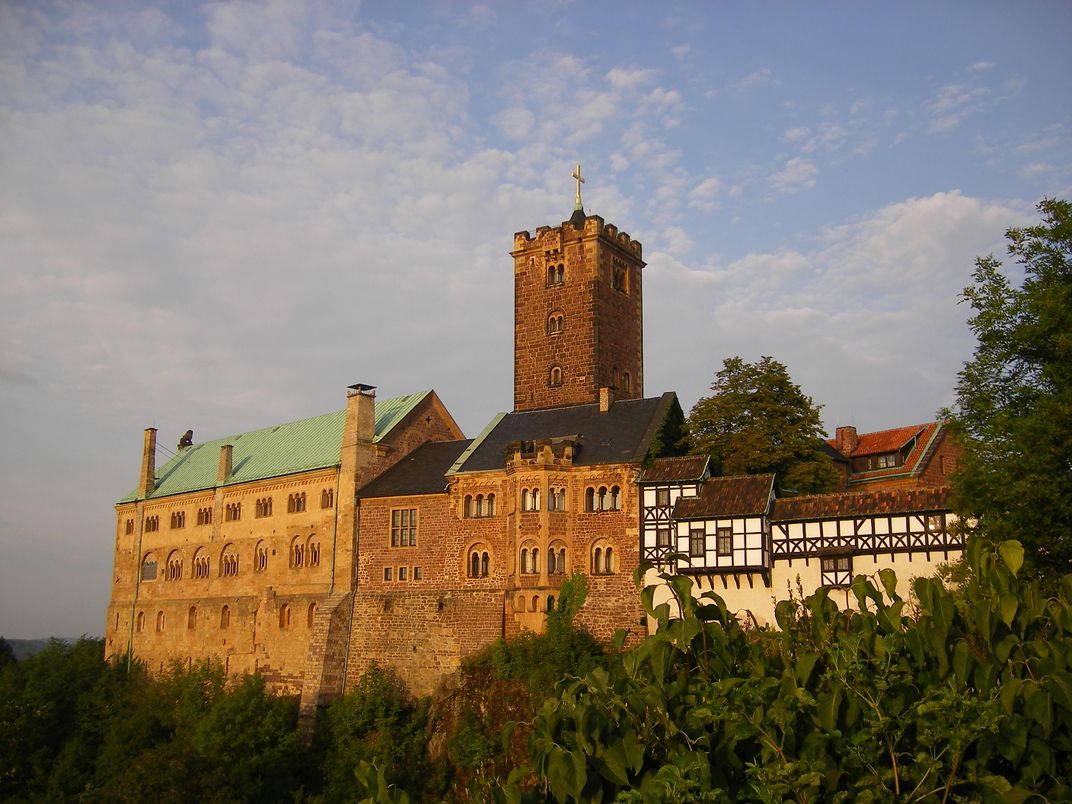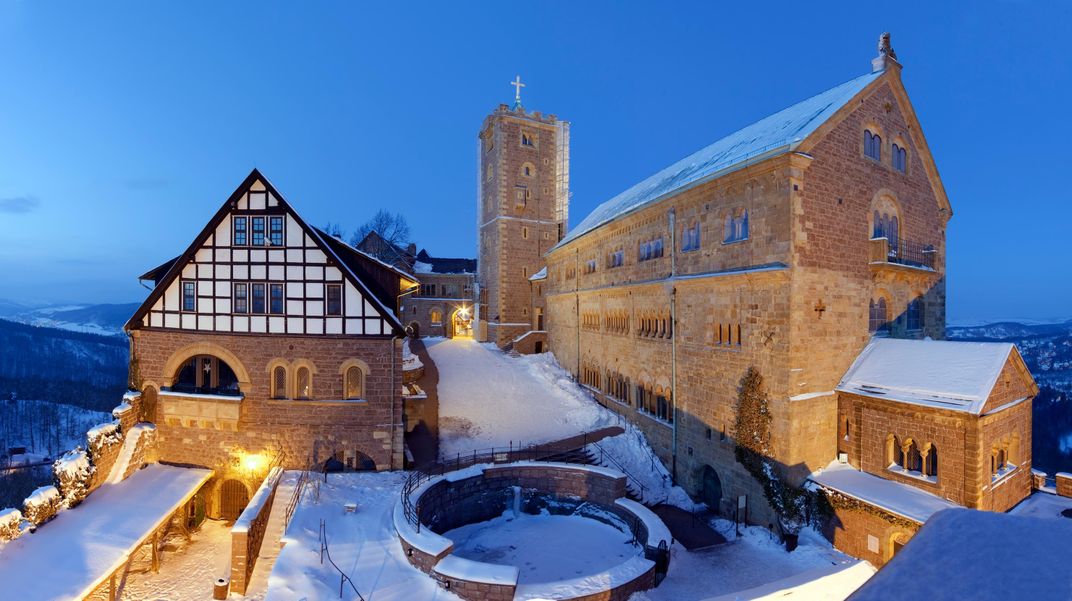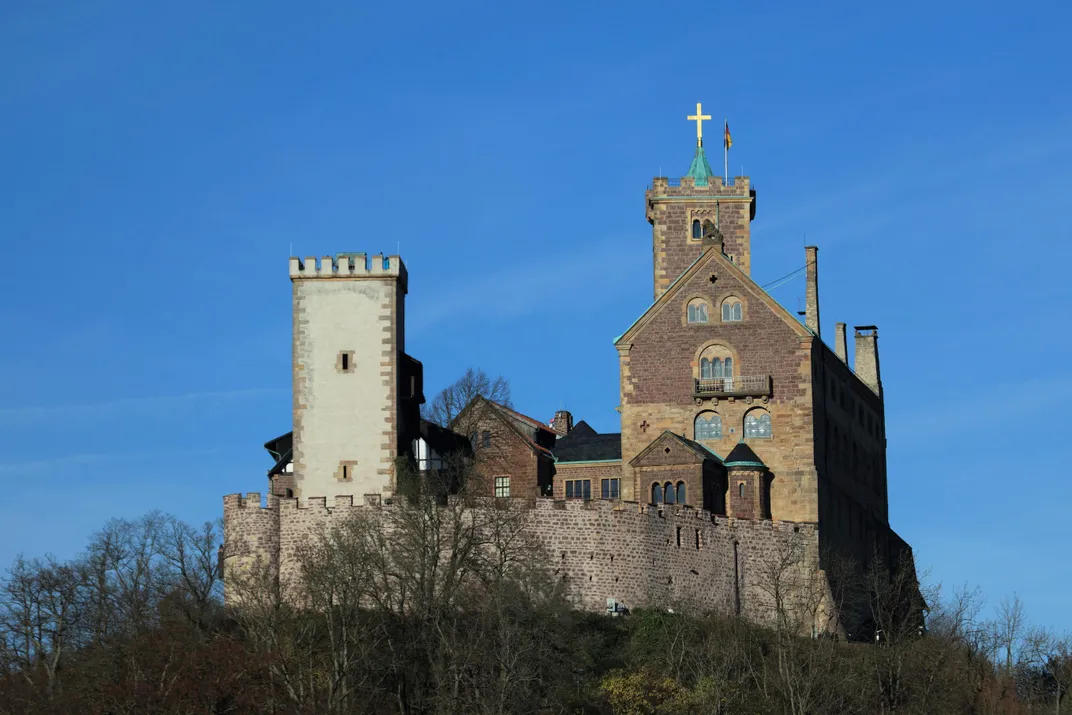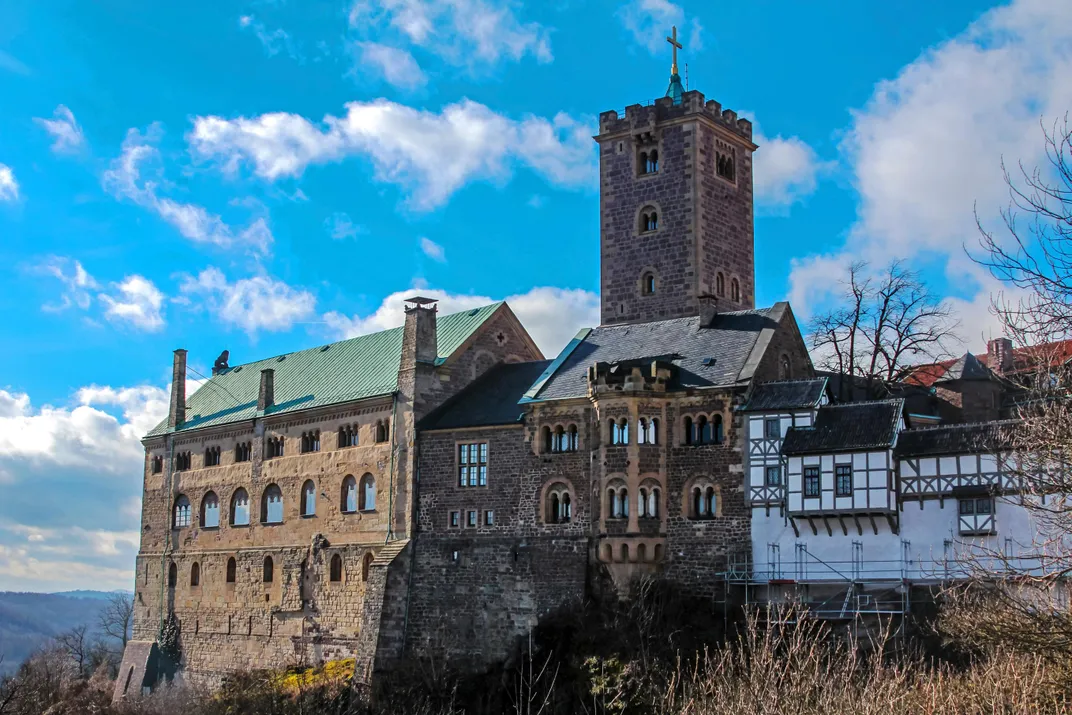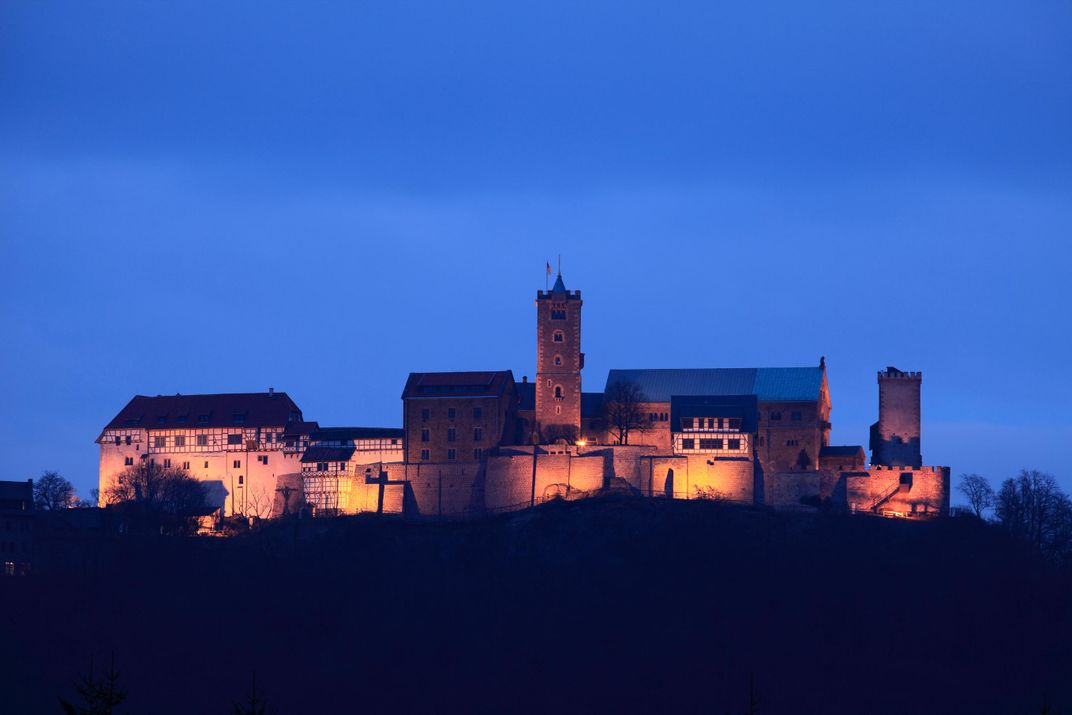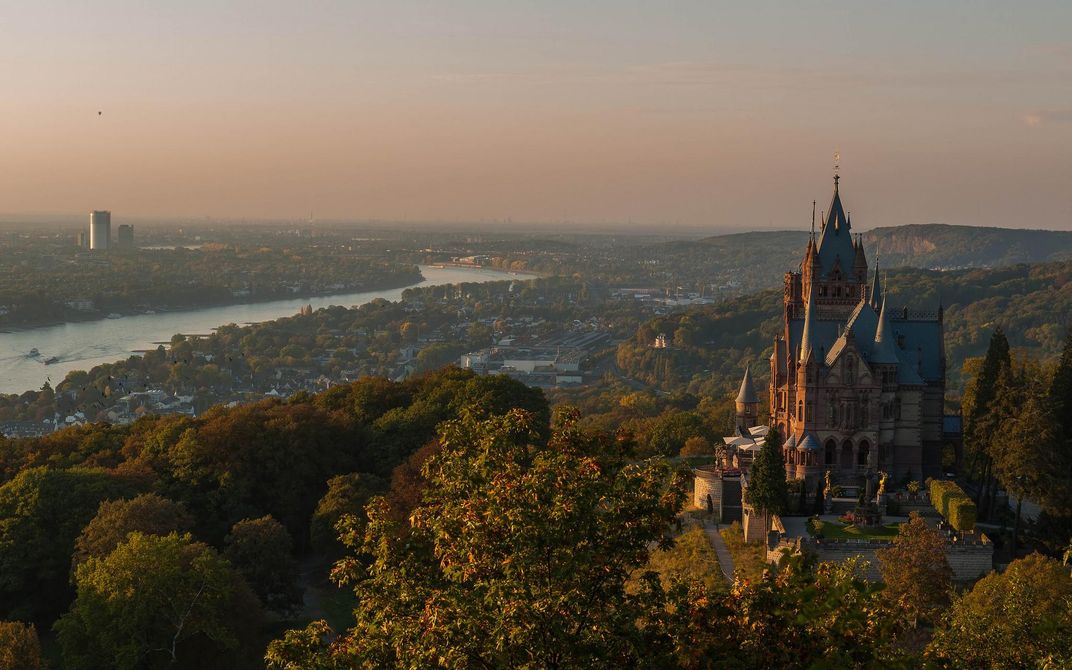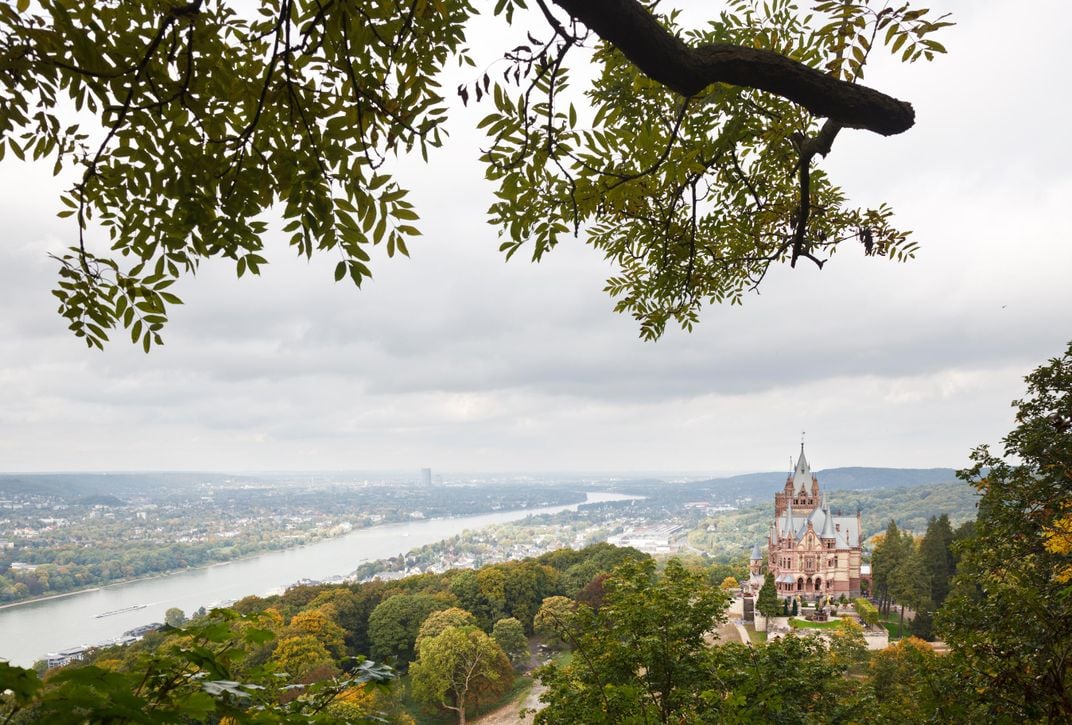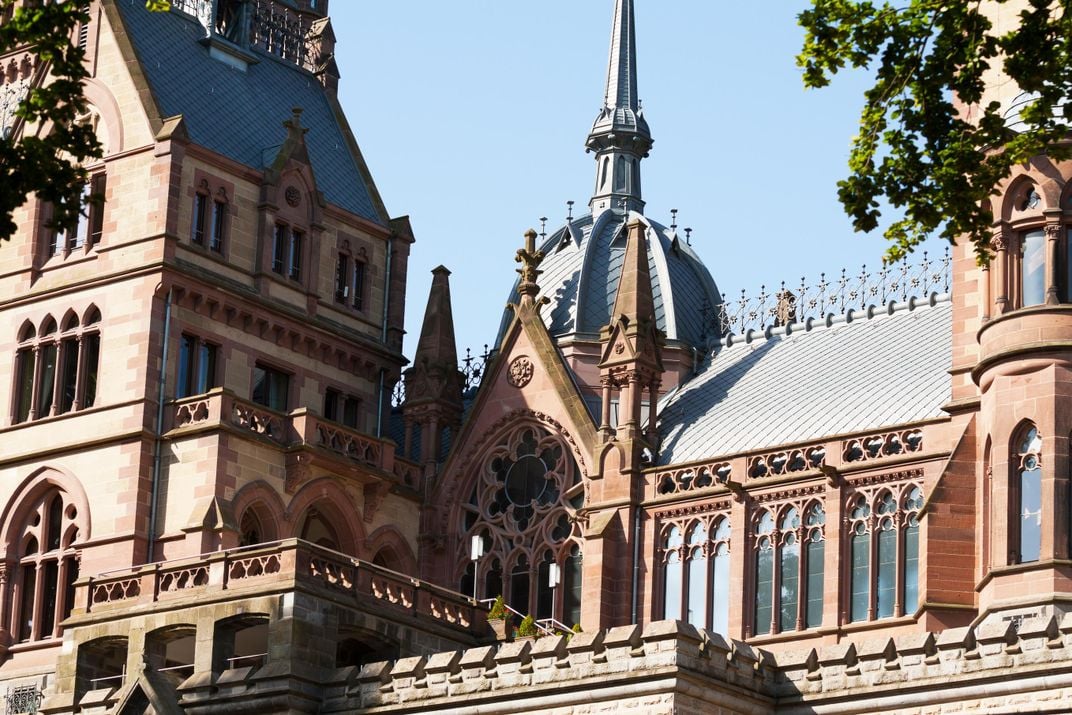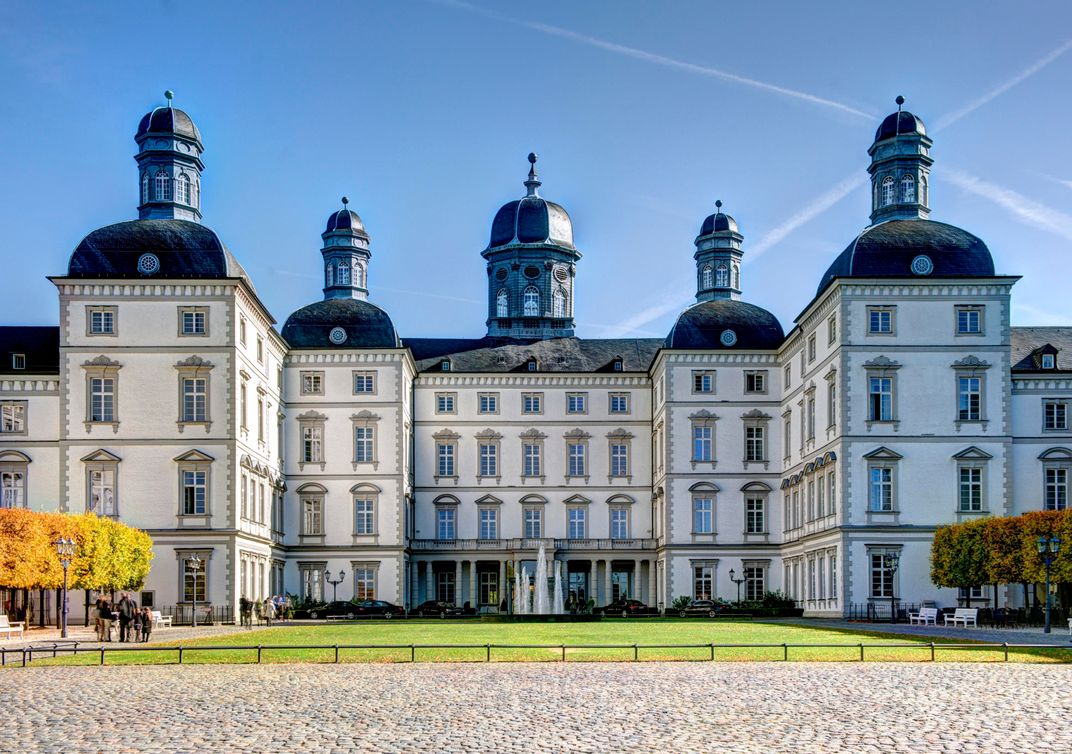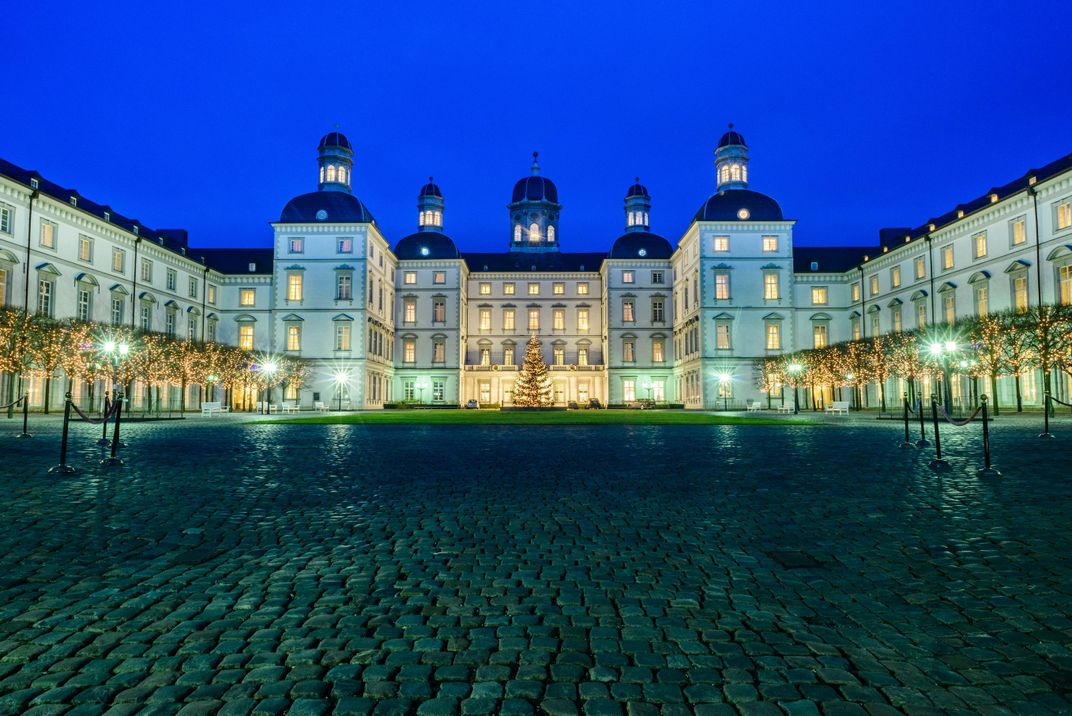Visit Seven Storybook Castles in Germany
These magnificent structures are straight out of a fairy tale
/https://tf-cmsv2-smithsonianmag-media.s3.amazonaws.com/filer/7f/2d/7f2dc9cc-2f81-4314-a43b-fb5200c6f756/istock_21501787_large.jpg)
A castle is the perfect places to drop one’s braid down a spire, lose a glass slipper leaving a ball in haste, or even fight a dragon. A series of real castles in Germany were behind the inspiration for decades of dream-like dwellings in Cinderella, Beauty and Beast, Sleeping Beauty and more—and many of these German gems are open to the public.
With an eye for the dramatic, the German schloss was usually surrounded by a moat and a history of noble residents for good measure besides all these fairy tales.
Relive a real-life fairy tale at these seven German castles:
Eltz Castle, Rhineland-Palatinate
This medieval castle, tucked into the hills above the Moselle river, was built to protect trade routes as early as 1157. By 1472, the castle was completed as it appears today and housed three landlord families – one of which still owns the castle 33 generations later. The Eltz family lives in private quarters within the castle, but other sections are open to the public. Noted for its treasury of money, the castle is loaded with gold, silver and porcelain artifacts fit for nobility. Until 1992, an engraving of the castle even appeared on Germany’s 500-mark note.
Elmau Castle, Bavaria
To see the sheer size and glory of Elmau, you’d never believe that it is renowned for its simplicity and naturalness as part of the “reform architecture” movement. The design, which came from the United Kingdom, is known for its simple monumentality and its rejection of classical orders of historicism. Built between 1914 and 1916 by Johannes Müller, a theologian and philosopher, the castle is renowned for its center for chamber music. Today, it has been converted into a luxury spa and cultural hideaway (with classical music concerts throughout the year) and even played host to last year’s G7 Summit.
Schwerin Castle, Mecklenburg-Vorpommern
At first this castle was only a fort on the nearby lake. But by 1857, nearly a millennium after its first incarnation, the castle was completed. Schwerin served as a symbol of the dynastic power of its founder, Friedrich Franz II of Mecklenburg-Schwerin. Today it houses a museum, a porcelain collection and an ancestral gallery and is shortlisted to become a Unesco World Heritage site. And for a little extra intrigue, the palace's ghost, Petermännchen (“little Peterman”) is said to roam the halls.
Hohenzollern Castle, Baden-Württemberg
The ancestral seat of the Prussian Royal House and of the Hohenzollern Princes, the castle coming out of the mists of the Swabian Alps has three distinct parts. The first part, the Hohenzollern House, dates back to at least 1061. The second part was constructed in 1454 and converted into a fortress, and Hohenzollern King Frederick William IV of Prussia built the third part from 1850 to 1867. Historical artifacts held here include the crown of Wilhelm II, King of Prussia, some of the personal effects of King Frederick the Great, and even a letter from George Washington giving gratitude to Hohenzollern descendant Baron von Steuben for his service in the Revolutionary War. Today, the show and staterooms are open to the public along with the various treasures in the vault - including silver and china.
Wartburg Castle, Thuringia
Built by Duke Ludwig of Thuringia in 1067, this castle was a hive of activity. Richard Wagner wrote his romantic opera Tannhäuser here and Princess Elizabeth of Hungary lived and worked here. It’s also the birthplace of one of history’s most famous Bibles: In 1521, Martin Luther (disguised as "Knight George") found refuge from a Catholic inquisition in the castle and wrote his German translation of the New Testament. Today, the stately medieval castle is a Unesco World Heritage site used as a classical concert venue and is open to the public throughout the year for tours.
Schloss Drachenburg, Königswinter
Nicknamed the “dragon castle” (Siegfried, the hero of the book “Nibelungenlied,” is said to have killed the dragon Fafnir here and bathed in its blood to become invulnerable), this private-villa-meets-summer-mansion was constructed in the late 19th century. Baron Stephan von Sarter, a banker-broker financial expert, built the castle as homage to his unnamed childhood sweetheart. By the time the castle was completed his great love had passed away, so he never moved into the space. Today, the property is in the possession of the State Foundation of North Rhine-Westphalia and is served by an intermediate station on the Drachenfels railway that takes you right to the castle. A tour includes admission to historical rooms, as well as access to the North Tower and the Vorburg (outer courtyard) with its Museum of the History of Nature Conservation in Germany.
Althoff Grandhotel Schloss Bensberg, North Rhine-Westphalia
At first this castle was planned as a hunting lodge by Prince-Elector Johann Wilhelm II for his second wife Maria-Luisa de Medici, but after a visit to Versailles he ordered his architects to construct something more imposing. Wilhelm died in 1716 never having lived in his “Rhenish Versailles” – which remained unfinished and was used as military hospital, refuge center and boarding school. In 1997, the property was remodeled and modernized as a luxury hotel.
